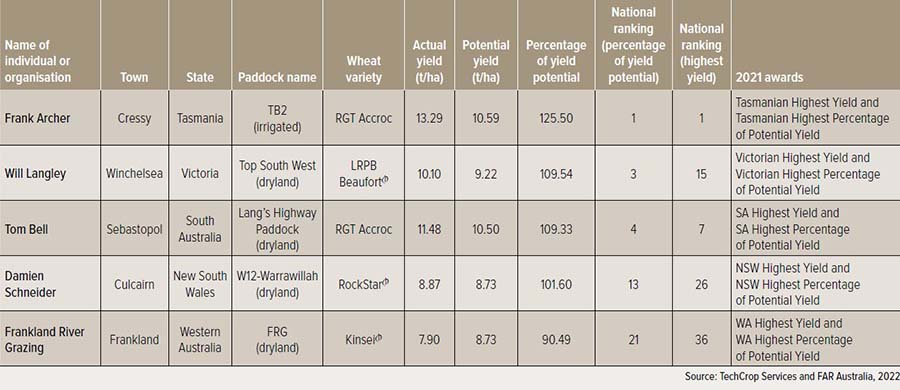Key points
- A wheat crop from Tasmania produced the most grain per hectare in GRDC’s 2021 Hyper Yielding Crops awards
- The irrigated RGT Accroc wheat crop yielded more than 13 tonnes of grain per hectare
- The crop exceeded its estimated potential yield of 10.59 tonnes per hectare by more than 25 per cent
- Four other growers, from New South Wales, Victoria, South Australia, and Western Australia, also won awards
A paddock of wheat that produced more than 13 tonnes of grain per hectare was placed first nationally in GRDC’s 2021 Hyper Yielding Crops awards.
Mixed farmer Frank Archer, from Cressy, took out Tasmania’s 2021 Highest Yield and 2021 Highest Percentage of Potential Yield categories in the awards, with a 50ha irrigated crop of RGT Accroc wheat.
The agronomy benchmarking program is part of GRDC’s Hyper Yielding Crops initiative, led by Field Applied Research Australia, which covers the high-rainfall areas of Victoria, South Australia, Tasmania, New South Wales, and Western Australia.
While the initiative focuses on closing the gap between actual and potential yields of wheat, barley and canola, the awards highlight the management growers use to boost wheat yields through agronomic benchmarking.
GRDC Hyper Yielding Crops national extension coordinator Jon Midwood of TechCrop Services says weighbridge tickets confirmed Mr Archer’s crop had outperformed its estimated potential yield by more than 25 per cent (see Table 1).
Table 1: Winners of the 2021 GRDC Hyper Yielding Crops awards.
The other 2021 award winners are:
- Will Langley, Winchelsea, Victoria;
- Tom Bell, Sebastapol, SA;
- Damien Schneider, Culcairn, NSW; and
- Frankland River Grazing, Frankland River, WA.
“All growers who produced high-yielding crops selected a high-yielding variety and planted it after a break crop that produced a high residual soil nutrient loading,” Mr Midwood says.
“These growers also applied high nitrogen rates in-crop to drive yield. However, in the past two years, we’ve learned that it is often not possible to rely on bagged nitrogen alone.
“Above about 225 kilograms/ha of applied nitrogen, it is difficult to guarantee a yield response. So, growing a legume break crop before wheat is ideal.”
Yield associations
High grain yields, he says, were associated with:
- sowing an appropriate variety in its recommended window so the crop flowers at the optimum time for each environment;
- having a sufficient bank of nutrients available to enable the crop to reach its yield potential;
- keeping the crop canopy green and free of disease with well-timed fungicides; and
- growing wheat after a break crop such as canola or faba beans.
Each GRDC Hyper Yielding Crops awards participant received a report showing how their 2021 management compared with the top 20 per cent and the other 80 per cent of growers from their region. It also includes an estimate of potential yields.
To estimate potential yields, Mr Midwood says the research team uses models to account for the climatic drivers of yields, namely:
- annual rainfall, plus irrigation, at the paddock location;
- available water capacity from the paddock’s soil to a depth of one metre;
- temperature and radiation during the critical period for grain number determination in the three to four weeks before flowering; and
- the radiation captured by the plant during the season and its conversion into biomass.
State coordinators also work with the 72 grower participants to collect soil, plant tissue and grain samples.
Tasmanian results
After analysing the Tasmanian dataset, Mr Midwood says most crops reached flowering later in 2021 than the modelling suggested was optimum, especially in the state’s north-west.
However, he says, there was evidence that growers had applied what they had learned in 2020 to push wheat yields higher in 2021.
“Tasmania’s top 20 per cent of high-yielding paddocks averaged 12.7t/ha in 2021, which is phenomenal,” he says. “The average yield of that group in 2020 was 10.9t/ha.
“Interestingly, the remaining 80 per cent of Tasmanian growers produced 9.8t/ha in 2020 and 2021.
“RGT Accroc was sown into the highest and second highest-yielding paddock. Manning had the lowest yield on average, but two out of three of these paddocks were grazed.
“Wheat following potatoes or poppies yielded 2t/ha higher than wheat following wheat. This is because these crops leave plenty of nitrogen and other nutrients for following crops.”
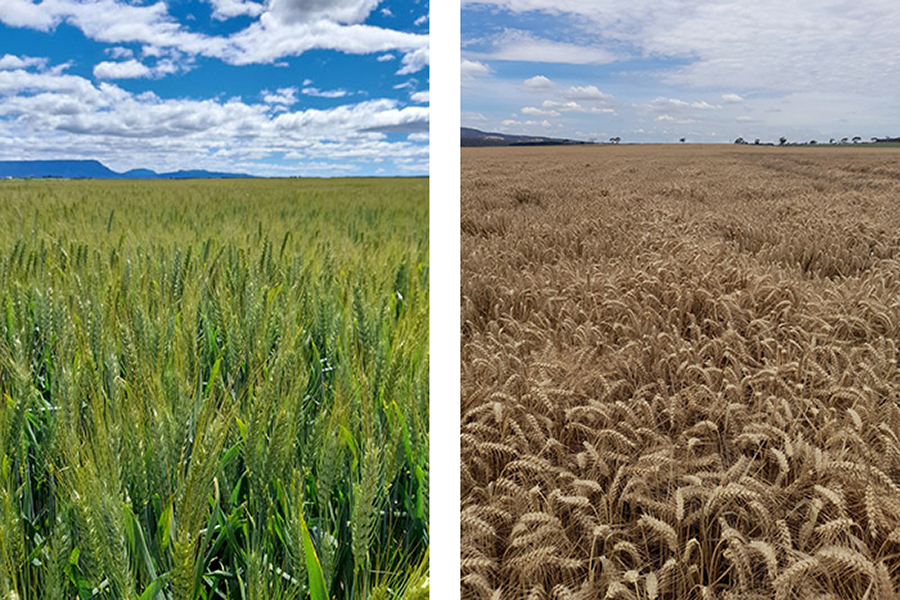
Frank Archer's RGT Accroc crop entered into GRDC’s 2021 Hyper Yielding Crops awards produced 547 heads of wheat per square metre. Photo: Naomi Palombi
Mr Midwood says the highest-yielding crops also had the highest levels of applied nitrogen.
“Tasmanian growers who produced the highest yields spent $24/ha more on fungicides than the other 75 per cent. They also applied one more fungicide treatment, on average. All growers used a plant growth regulator.
“Interestingly, growing season rainfall, radiation, spring rainfall and soil water holding capacity does not appear to have been the reason for the yield differences in 2021.”
Victorian results
In Victoria, Mr Midwood says growers who produced the highest-yielding wheat sowed a variety that reached flowering at the optimum timing to maximise yield potential.
“In 2021, the highest-yielding paddocks were sown to RGT Accroc and LRPB Beaufort between 11 and 18 May,” he says.
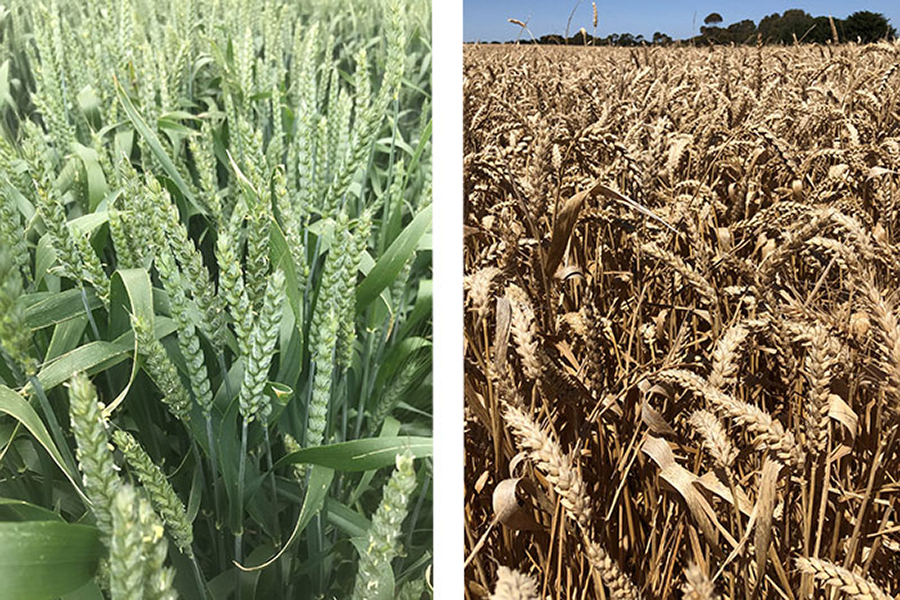
Left: Will Langley's 2021 Hyper Yielding Crop produced 10.10t/ha of LRPB Beaufort grain on his farm near Winchelsea, Victoria. Right: The crop produced 496 heads per square metre. Photos: Ashley Amourgis
“Wheat following canola or faba beans yielded about 0.5t/ha higher than wheat after wheat. On average, wheat after wheat paddocks required 40kg/ha more nitrogen than wheat after canola and 80kg/ha more nitrogen than wheat following faba beans.
“The 20 per cent of growers who produced the highest yields spent slightly more money per hectare on fungicides. They also used higher rates, on average, than the remaining 80 per cent.
“All Victorian growers had grain with low levels of phosphorus, potassium, and sulfur. While soil analysis results can help predict a crop’s needs, grain analysis estimates crop capture and use.
“Growers whose grain was low in phosphorus, potassium and sulfur might need to check soil supplies of these nutrients, by looking at their most recent soil tests to ensure they do not limit grain yields going forward.”
SA results
In SA, Mr Midwood says the growers who produced the highest-yielding wheat crops targeted a sowing date with a variety that flowered at the optimum time.

Tom Bell, Sebastopol, SA, grew an RGT Accroc crop in 2021 that produced 659 heads per square metre. Photo: Jen Lillecrapp
“In 2021, growers with the highest-yielding crops sowed RGT Accroc between 12 May and 15 May,” he says.
“Accordingly, RGT Accroc produced the highest yields on average, followed by Anapurna. The lowest yields were produced in paddocks sown to RockStar. These paddocks yielded about 1t/ha less than paddocks sown to RGT Accroc, on average.
“Wheat following canola or beans was about 1t/ha higher yielding than wheat following wheat or a waterlogged clover crop.
“On average, the second wheat crop after clover required about 40kg/ha of nitrogen more than wheat sown after faba beans. Wheat after canola required about 60kg/ha more nitrogen than wheat following beans.”
Regarding disease management, Mr Midwood says growers who produced the highest yields spent $11/ha more on fungicides and used higher rates, on average, than the remaining 80 per cent. Further, the growers with higher yields had a lower fungicide cost per tonne of grain.
“All SA growers had grain low in potassium, sulfur, zinc and molybdenum. This indicates a need to check the latest soil test to ensure crops are not deficient going forward.”
Southern NSW results
For growers from southern NSW, Mr Midwood says the 20 per cent who produced the highest yields sowed varieties that reached flowering closer to the optimum window.
“In 2021, the 20 per cent of growers who produced the highest yields had varieties that reached flowering 11 days later than the remaining 80 per cent from the same average sowing date,” he says.
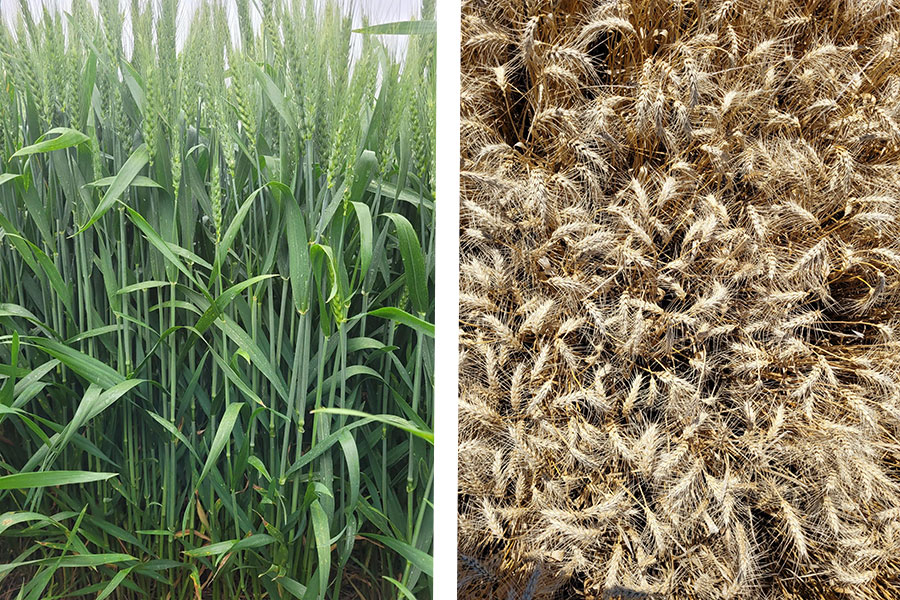
Left: Damien Schneider's 2021 GRDC Hyper Yielding Crop of RockStar (PBR) wheat flowered on 10 October on his farm near Culcairn, New South Wales. Right: The crop produced 526 heads per square metre. Photos: Kate Coffey
“While the highest-yielding crop from southern NSW was sown to RockStar , the other two highest-yielding paddocks were sown to RGT Accroc and Anapurna, both winter wheat varieties. The long, soft finish in 2021 helped these varieties reach their potential.
“Wheat planted after legumes yielded about 0.75t/ha higher than wheat sown after wheat or canola in 2021.”
WA results
Mr Midwood says there was a large range in sowing date and variety phenology, resulting in a five-week spread in flowering in the WA wheat crops.
“The highest-yielding 20 per cent of paddocks flowered two weeks earlier on average than the remaining 80 per cent,” he says.
“In 2021, the WA growers who produced the highest 20 per cent of yields had paddocks that produced about 0.9t/ha more grain than in 2020, whereas the remaining 80 per cent had crops that yielded 1.3t/ha more at an average of 5.5t/ha.
“Kinsei was the highest-yielding variety in 2021 among the WA awards paddocks. RockStar was the lowest-yielding variety and produced 1t/ha less grain, on average.
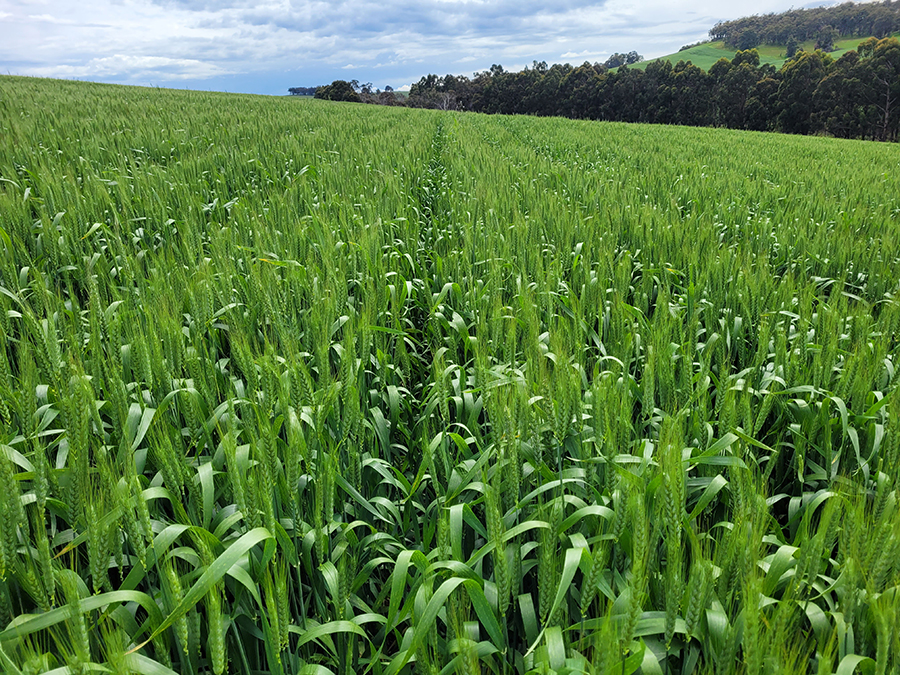
Frankland River Grazing won GRDC's 2021 Hyper Yielding Crops award for the WA's Highest Yield and WA's Highest Percentage of Potential Yield. The company’s Kinsei (PBR) wheat yielded 7.9t/ha on average. Photo: Dan Fay
“Wheat following canola or beans yielded about 0.25t/ha more than wheat following lupins or a short-term pasture.
“On average, the 20 per cent of growers who produced the highest yields applied 50kg/ha more nitrogen to their crops, even though wheat was planted after either canola or faba beans.
“Interestingly, the top-performing growers spent the same amount of money on nitrogen per tonne of grain as the remaining growers.
“The high-yielding group spent $7/ha more on fungicides than the other growers. However, their cost per tonne of grain was less.
“All paddocks had low grain nutrient levels of potassium, sulfur and zinc, indicating a check of paddock supplies may be needed.”
Two-year average
For the 135 paddocks in the Hyper Yielding Crops awards across five states during the past two years, the average wheat yield was just over 8t/ha, which Mr Midwood says was a fantastic achievement.
“In the past two years, WA growers averaged 5.3t/ha, while the figure for southern NSW and northern Victoria was 6.4t/ha,” he says.
“Average yields for the rest of Victoria, SA and Tasmania for 2020 and 2021 were 7.9t/ha, 8.9t/h and 10.3t/ha respectively.”
Low-hanging fruit
In 2020 when people were first growing RGT Accroc, Mr Midwood says, they typically sowed the variety at the right time, but sowing density was often way too high.
“They were also putting on too much nitrogen too early, and there were paddocks of RGT Accroc everywhere that were lodging,” he says.
“While we haven’t eliminated lodging completely, in 2021 there was less lodging because growers took on what we suggested, which was to apply nitrogen later in the crop’s development.
“They also planted their wheat at a lower density and collected deep nitrogen samples before applying urea to determine how much nitrogen was still available in the soil.”
For growers already producing high-yielding wheat crops, he says, there is less ‘low-hanging fruit’ available. This means they will need to continue to make those one per cent tweaks to continue to lift yields higher.
“Our agronomy benchmarking reports carry a wealth of data. For example, some SA growers are now considering using trace elements to push yields higher,” he says.
“Typically, attention to detail and timeliness are qualities that set the top-performing growers apart when it comes to growing high-yielding wheat.”
More information: Hyper Yielding Crops; Jon Midwood, jon@techcrop.com.au; Nick Poole (project lead), nick.poole@faraustralia.com.au


























































